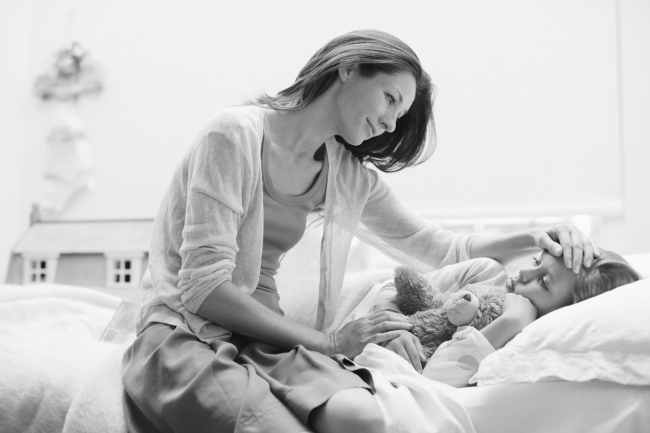Archives
Stay up-to-date and on top of your health with our e-Newsletter and receive updates on current treatments and vital health issues.
Fever in a child – knowing your A • B • C • D

While it can be worrying when a child has a fever, it is important to remember that it is part of the body’s normal immune response when fighting infection. A child’s normal body temperature is typically between 36.50c – 37.5oc. A temperature above 38oc indicates a fever. In many cases the illness will spontaneously resolve with time and no required treatment, but there will be times when medical review and treatment is required. The difficulty is knowing when to be concerned and how to manage the fever.
It is important to follow your intuition and if, as a parent, you are concerned about your child, that is reason enough to seek medical advice. If you are unsure when your child with fever should be seen by a doctor, here are the A, B, C, D signs of concern to look out for:
A – Alertness/Arousal/Activity – Is your child less alert than usual? Are they difficult to arouse? Are they less active than usual? Do they appear drowsy, very irritable or floppy?
B – Breathing difficulties – Is your child breathing faster than usual? Are there any signs that your child is having difficulty breathing or requiring more effort to take a breath? Are there any unusual sounds when your child breathes in or out?
C – Colour/circulation – is your child pale or blue? Do they have a rash, or very cold hands and feet?
D – Dehydration/decreased fluid input or output – Is your child producing less than 4 wet nappies per day, not able to eat OR drink or not able to keep any fluids down?
If your child has any of these signs, seems very sick or is under 3 months of age, they need to be seen by a doctor as soon as possible.
What should you do if your child has a fever?
- Dress your child in light clothing (enough to avoid shivering)
- Ensure adequate fluid intake – offer your child fluids regularly (where a baby is breastfed, the most appropriate fluid is breast milk)
- Look for signs of dehydration – dry mouth, sunken eyes, no tears, fewer wet nappies than normal
- Administer fever lowering medications such as paracetamol to help reduce fever and discomfort
- Do not sponge your child with water or use fans to cool them down – this does not help to reduce a fever. Whilst you may think these things will help cool your child down they can actually be counterproductive by causing the skin’s blood vessels to constrict thereby actually increasing the body’s core temperature
- Observe your child for any of the signs mentioned above and see your doctor if you are at all concerned